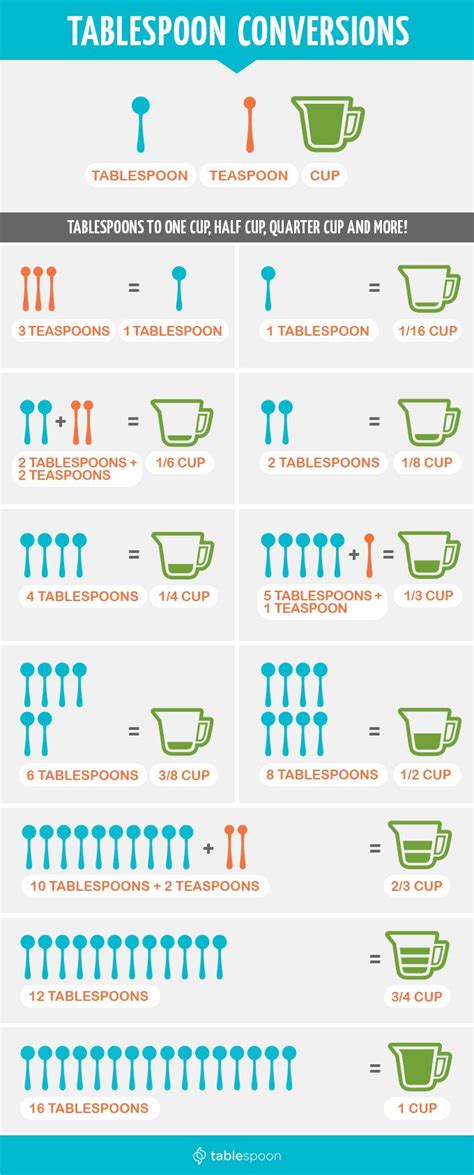How Much Is 2/3 Cup In Tablespoons
Webtuts
Apr 06, 2025 · 4 min read

Table of Contents
How Much is 2/3 Cup in Tablespoons? A Comprehensive Guide to Cooking Conversions
Understanding cooking measurements is crucial for baking and cooking success. One common conversion that often trips up home cooks is figuring out how much 2/3 cup equals in tablespoons. This seemingly simple question can lead to confusion, especially when dealing with recipes that require precise measurements for optimal results. This comprehensive guide will not only answer the question definitively but also delve into the underlying principles of volume conversion, providing you with the tools to confidently tackle any future culinary measurement challenges.
Understanding the Basics: Cups, Tablespoons, and Teaspoons
Before diving into the specific conversion of 2/3 cup to tablespoons, let's establish a solid foundation by understanding the relationship between common cooking measurement units. The fundamental unit for dry and liquid ingredients in many recipes is the cup. A cup is further divided into:
- 8 fluid ounces: This is the volume equivalent of one cup.
- 16 tablespoons: One cup contains 16 tablespoons.
- 48 teaspoons: One cup contains 48 teaspoons.
This hierarchical relationship is key to performing accurate conversions between these units.
Calculating 2/3 Cup in Tablespoons: The Simple Method
The most straightforward way to calculate how many tablespoons are in 2/3 cup is to use the established conversion factor: 1 cup = 16 tablespoons.
-
Find the fraction of a cup: We are dealing with 2/3 of a cup.
-
Multiply by the conversion factor: To find the equivalent in tablespoons, multiply 2/3 by 16:
(2/3) * 16 tablespoons = 32/3 tablespoons
-
Simplify the fraction: This gives us an improper fraction. To express it as a mixed number, divide 32 by 3:
32 ÷ 3 = 10 with a remainder of 2.
-
Final answer: This means that 2/3 cup equals 10 and 2/3 tablespoons.
Calculating 2/3 Cup in Tablespoons: The Decimal Approach
For those who prefer working with decimals, you can easily convert the fraction to a decimal before performing the calculation.
-
Convert the fraction to a decimal: 2/3 is approximately equal to 0.667 (rounded to three decimal places). Note that using more decimal places will increase the accuracy of the final result.
-
Multiply by the conversion factor: Multiply the decimal equivalent by 16 tablespoons:
0.667 * 16 tablespoons ≈ 10.672 tablespoons
-
Round to the nearest significant figure: This gives approximately 10.7 tablespoons. The rounding will introduce a small degree of inaccuracy, but this is usually negligible in most cooking applications.
Practical Applications and Considerations
Knowing that 2/3 cup is approximately equal to 10 2/3 or 10.7 tablespoons is valuable in various cooking situations. Here are some examples:
-
Baking: Precise measurements are paramount in baking. Using the correct amount of ingredients can significantly impact the final texture and taste of your baked goods. A slight variation in liquid measurements, like 2/3 cup, can make a noticeable difference.
-
Cooking: While cooking often allows for more flexibility in measurements, understanding precise conversions ensures consistency in recipe results.
-
Recipe Adapting: When adapting recipes, you may need to convert measurements between different units. Knowing this conversion will enable you to accurately scale up or down a recipe to accommodate the number of servings.
Beyond the Conversion: Mastering Measurement Techniques
While knowing the conversion of 2/3 cup to tablespoons is crucial, mastering the techniques of measuring ingredients is equally important.
-
Using Measuring Cups: Always use the correct measuring cup for the ingredient. Use dry measuring cups for dry ingredients and liquid measuring cups for liquids. Level off dry ingredients with a straight edge to ensure accuracy.
-
Using Measuring Spoons: For smaller amounts, measuring spoons are essential. Fill the spoons completely but avoid overfilling.
-
Understanding Ingredient Density: The density of ingredients can influence the accuracy of measurements. For instance, a packed cup of flour will weigh more than a lightly spooned cup.
-
The Importance of Accuracy: Strive for accuracy in your measurements, especially in baking. Consistent measurements ensure your recipe turns out as intended.
Troubleshooting Common Measurement Mistakes
Several common mistakes can lead to inaccurate measurements and affect the final outcome of your cooking or baking endeavors. These include:
-
Packed vs. Scooped Measurements: Always follow the recipe's instructions regarding whether an ingredient should be packed or lightly scooped. A packed measurement will generally result in a higher volume than a scooped measurement.
-
Using the Wrong Measuring Tools: Using measuring spoons for dry ingredients or liquid measuring cups for dry ingredients can significantly impact the accuracy of your measurement.
-
Incorrect Leveling: Failing to level off dry ingredients results in an overestimation of the amount of ingredients used.
Conclusion: Confidence in the Kitchen Through Accurate Conversions
Knowing how much 2/3 cup is in tablespoons empowers you to confidently tackle recipes and culinary adventures. The conversion, whether calculated using fractions or decimals, ultimately yields a similar result: approximately 10 2/3 tablespoons. Remember that understanding the underlying principles of measurement, along with mastering proper measurement techniques, will contribute significantly to the success of your cooking and baking. By adopting these practices, you will elevate your culinary skills and achieve consistent, delicious results every time. Happy cooking!
Latest Posts
Latest Posts
-
How Many Teaspoons Are In 16 Tablespoons
Apr 09, 2025
-
90 Days From August 12 2024
Apr 09, 2025
-
What Time Is It 18 Hours From Now
Apr 09, 2025
-
35 Pounds Is How Many Kg
Apr 09, 2025
-
How Many Hours Is 2 000 Minutes
Apr 09, 2025
Related Post
Thank you for visiting our website which covers about How Much Is 2/3 Cup In Tablespoons . We hope the information provided has been useful to you. Feel free to contact us if you have any questions or need further assistance. See you next time and don't miss to bookmark.